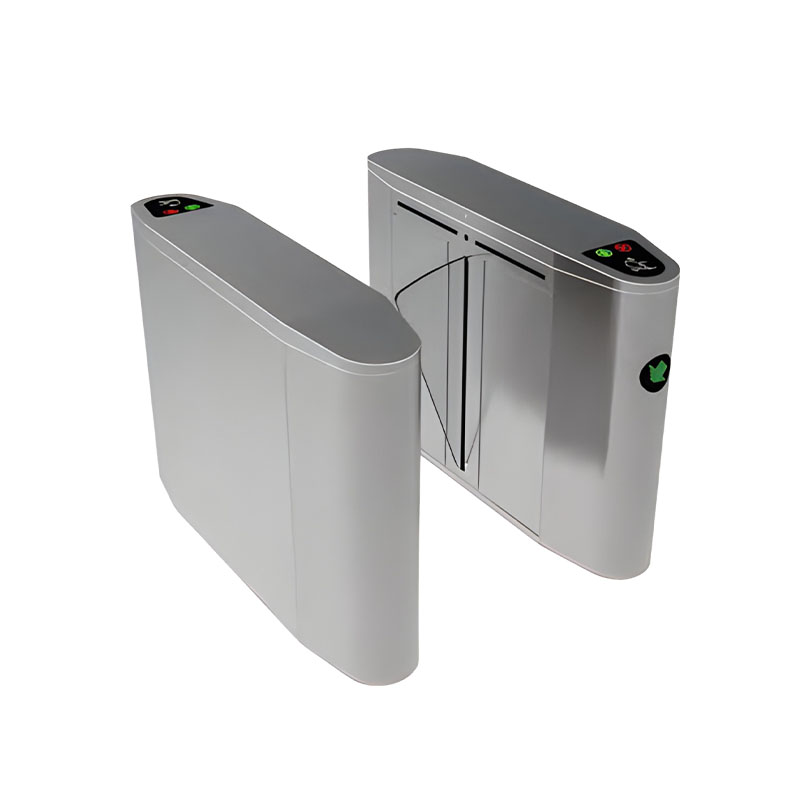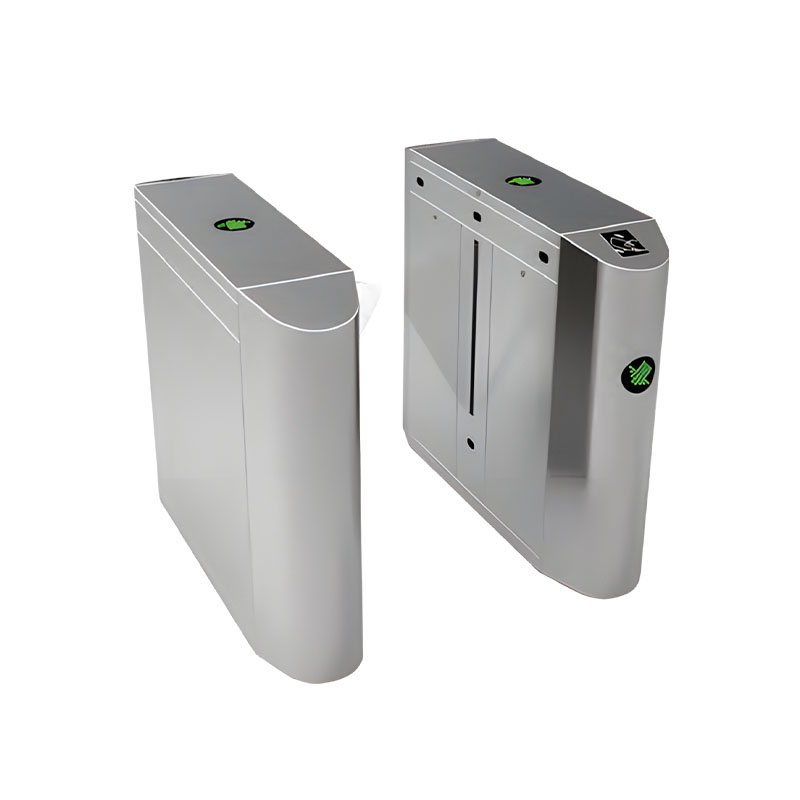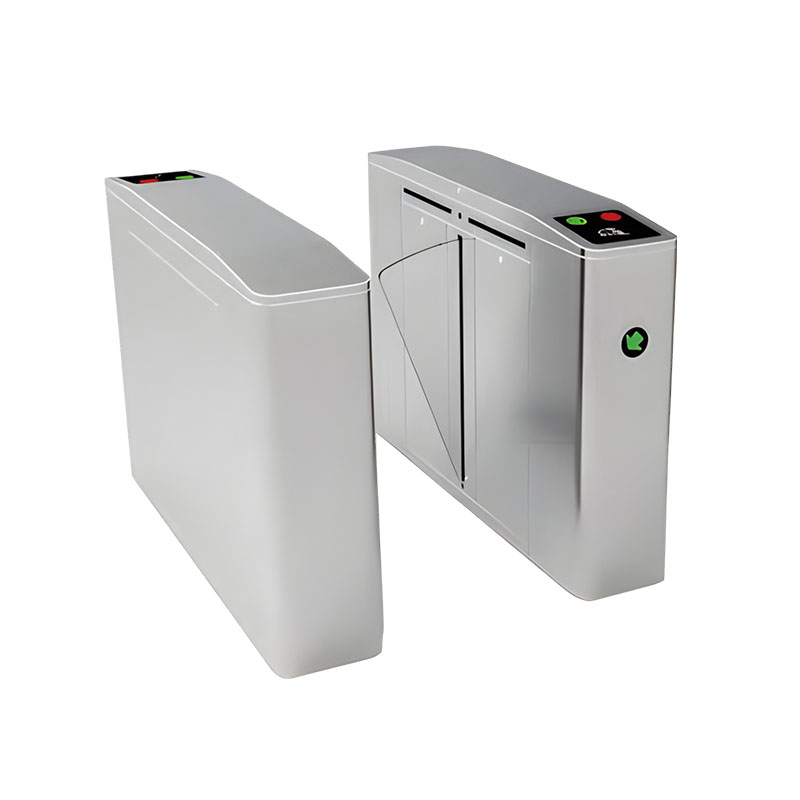What determines the speed of traffic at a pedestrian access gate?
Release Time : 2025-06-12
The speed of pedestrian access gate is not determined by a single factor, but by the combined effect of multiple factors such as equipment hardware performance, software system response, user traffic behavior, and environmental conditions. Understanding these influencing factors will help optimize the traffic efficiency of gates in practical applications and ensure smooth traffic flow.
First, the hardware structure type of the gate has a direct impact on the traffic speed. Different types of pedestrian access gates have different mechanical structure designs and gate opening and closing methods. For example, the three-roller gate blocks and releases by rotating the roller rod. The structure is relatively simple, but the angle and resistance of the gate rotation will affect the time of a single pass; the gate of the swing gate is usually opened and closed in a swinging manner. If lightweight materials are used and the drive device has superior performance, the opening and closing speed will be faster; the wing gate realizes traffic control by the extension and retraction of the two wing plates. The extension and retraction speed of the gate is closely related to the motor drive capacity. The high-performance motor can quickly expand or retract the wing plates, reducing the time consumption of opening and closing. The precision of hardware components is also critical. For example, the smoothness of the bearings and the wear of the transmission device will affect the smoothness of the gate movement and thus change the traffic speed.
Secondly, the efficiency of the control system and recognition technology is an important influencing factor. The control system of the gate is like a "brain". The speed of its signal processing and the algorithm logic determine the speed of its response to the pass command. An efficient control system can quickly receive the signal from the recognition device, and quickly issue the gate action command after calculation, reducing the delay in the intermediate links. The type and performance of recognition technology are more obvious: when swiping the card for recognition, the reading speed of the card reader and the sensing sensitivity of the card will affect the recognition time; QR code recognition requires the camera to clearly capture the pattern and decode it. If the light is insufficient or the QR code is blurred, the recognition time will be extended; face recognition technology depends on the resolution of the camera, the recognition speed of the algorithm and the comparison efficiency of the database. Advanced face recognition algorithms can complete feature extraction and matching at the millisecond level, greatly improving the passage efficiency. If the connection between the recognition technology and the control system is not smooth enough, even if the speed of a single link is fast, the overall response may lag behind.
The user's travel behavior habits will also affect the passage speed. When people pass through the gate, whether they prepare the pass in advance and whether they approach the recognition area in a standardized manner will affect the recognition efficiency. For example, when users carrying large items pass through, they may need to adjust their posture or spend more time passing through the gate, resulting in an increase in the time for a single pass; if there are elderly people, children or people with limited mobility among the passers-by, their walking speed will be slow, which will also reduce the overall traffic efficiency. In addition, the impact of crowd density is particularly significant: in the case of low traffic, the interval time between each person passing is sufficient, and the gate can maintain a faster response speed; during peak hours, people flow in continuously. If the previous user has not completely passed through the gate, the next user is eager to approach, which may cause the sensor to misjudge or the gate to repeat the action, but reduce the speed of passage and even cause congestion.
The installation environment and maintenance status of the gate cannot be ignored. Factors such as temperature, humidity, and dust in the outdoor environment may affect the hardware. For example, the viscosity of the motor lubricating oil increases in low temperature environments, which may cause the operating resistance to increase and the gate opening and closing speed to slow down; if the humid environment causes the circuit components to get damp, it will affect the stability of signal transmission and cause control system response delays. The light conditions at the installation location are also critical. Too strong direct light may cause the camera to overexpose when recognizing a QR code or a face, while too weak light will cause the image to be blurred. Both situations will prolong the recognition time. In addition, whether daily maintenance is in place is directly related to the performance of the equipment. Regular cleaning of sensors, lubrication of mechanical parts, and updating of software systems can ensure that all parts of the gate are in the best condition. If there is a long-term lack of maintenance, the mechanical structure may become stuck due to wear and tear, and the software system may run slowly due to vulnerabilities or outdated versions.
The balance between safety and traffic efficiency will also affect the speed. To ensure safety, gates are usually equipped with anti-tailing and anti-pinch functions. The trigger sensitivity and response mechanism of these functions will indirectly affect the speed of passage. For example, if the time interval of anti-tailing detection is set too short, it may be misjudged as tailing when people pass normally and continuously, causing the gate to close early or sound an alarm, thereby interrupting the passage process; if the sensitivity of the anti-pinch sensor is too high, a slight touch will trigger the gate to retract, which will also increase the time of a single pass. In addition, in some scenarios, the gate will be linked with security inspection equipment, such as adding metal detection or item inspection links. These additional security steps will inevitably reduce the speed of passage, because users need to stay and cooperate with the inspection, and the gate release logic also needs to wait for the security inspection results to be confirmed.
The setting of the passage mode and system compatibility also play a role. The passage mode of the gate can be divided into one-way passage, two-way passage or mixed mode, and the logic processing complexity in different modes is different. In one-way passage, the control system only needs to process signals in a single direction, and the response speed is relatively faster; while two-way passage requires real-time judgment of the direction of personnel entering and exiting. If the logic algorithm is not optimized enough, there may be a delay in direction recognition. In addition, the compatibility of the gate with other systems is also very important, such as docking with the access control management system, attendance system, and visitor system. If the data interaction interface is not smooth, or the protocols between the systems do not match, it may cause a delay in the transmission of authorization information, causing the gate to freeze when verifying user permissions. Especially in the cross-system linkage scenario, if the system response of a certain intermediate link is slow, the entire passage process will be lengthened.
The speed of pedestrian access gates is the result of multiple factors, including hardware performance, software algorithms, user behavior, environmental conditions, and security settings. In actual applications, it is necessary to optimize the configuration of each link according to the scene requirements, such as selecting the appropriate gate type, upgrading efficient recognition technology, standardizing user traffic guidance, and doing a good job of equipment maintenance and environmental adaptation, so as to maximize traffic efficiency while ensuring safety and enable pedestrian access gates to play the best role in crowd management.







